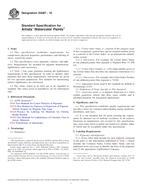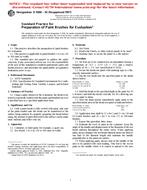1.1 This test method covers two procedures for determining the compressive resistance of thermal insulations.
1.1.1 Procedure A covers thermal insulations having an approximate straight-line portion of a load-deformation curve, but that may or may not have an identifiable yield point as shown in Figs. 1 and 2. Such behavior is typical of most rigid board or block-type insulations.
1.1.2 Procedure B covers thermal insulations that become increasingly more stiff as load is increased, as shown in . Such behavior is typical of fibrous batt and blanket insulations that have been compressed previously to at least the same deformation by compression packaging or mechanical softening.
1.2 It is recognized that the classification of materials under Procedures A and B may not hold in all cases. For example, some batt or blanket materials that have not been compression packaged will exhibit behavior more typical of Procedure A for their first loadings. Also, some higher density fibrous insulation boards that have been precompressed will exhibit load-deformation curves more typical of Procedure B. There will also be thermal insulations with load-deformation curves that follow none of the three types shown here; that is, curves with no straight-line portion, curves with compaction areas, and curves that change from negative to positive slope.
1.3 This test method does not cover reflective or loose fill insulations.
1.4 The values stated in inch-pound units are to be regarded as the standard. The values given in parentheses are for information only.
1.5 This standard does not purport to address all of the safety concerns, if any, associated with its use. It is the responsibility of the user of this standard to establish appropriate safety and health practices and determine the applicability of regulatory limitations prior to use.
Product Details
- Published:
- 10/10/2000
- Number of Pages:
- 5
- File Size:
- 1 file , 82 KB


